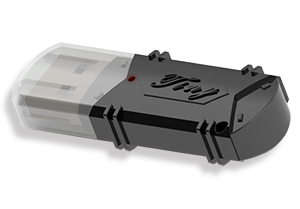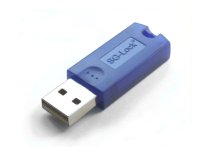
PROFIBUS OPC Server Configurator Test with Sentinel SuperPRO Dongle
The “hybrid” factor of PROFIBUS
PROFIBUS covers factory and process automation with the same consistent communication protocol and therefore enables mixed (hybrid) applications, which are often seen in the pharmaceutical or food and beverage industries or in water and wastewater applications. Here, continuously running processes, e.g. mixing or drying, are typically combined with discrete functions such as identifying, conveying or packing (fig. 3). Here, the common communication protocol PROFIBUS DP combined with specific application profiles provides a powerful advantage: both process and factory automation networks can be connected to the same single cable. Other buses focus on either process or discrete markets so they always have to use a second Fieldbus, which means extra expense for cabling, equipment, skills, maintenance and support. PROFIBUS is alone in delivering a single solution for both sectors.
Consistent and application-oriented
PROFIBUS is modularly structured as a building block (fig. 1) with the communication protocol as a core component. This is combined with application-specific modules for transmission, application (“Application profiles”), and engineering to form complete PROFIBUS solutions for specific market segments (industry sectors), as shown in fig.
PROFIBUS is the Fieldbus-based automation standard of PROFIBUS & PROFINET International (PI). Via a single bus cable, PROFIBUS links controller or control systems with decentralized field devices (sensors and actuators) on the field level and also enables consistent data exchange with higher ranking communication systems.
Consistency of PROFIBUS is enabled by utilizing a single, standardized, application-independent communication protocol (named PROFIBUS DP), which, without any difference, supports Fieldbus solutions both in factory and process automation as well as in motion control and safety-related tasks.
To ensure correct interaction between the numerous devices of an automation solution, the basic device functions and services must match in regard to communication, functionality, and industry sector solutions. This uniformity is achieved by means of “application profiles” which refer to device families or special industry sector requirements, e.g. process automation (PA Devices), Motion Control (PROFIdrive), or integration of HART devices (HART on PROFIBUS).
PROFIBUS OPC Server Unreached consistency
In figure 4, PROFIBUS DP is in the central position and carries communication data between a controller and field devices, preferably in Factory Automation (FA). Downwards, a PROFIBUS PA string is connected through a coupler or linking device to enable typical process automation (PA) applications, e.g. in a hazardous environment. Upwards, the controller is connected to PROFINET as a system bus and interface to MES and ERP levels. PA segments can also be connected directly to PROFINET using proxy technology.
The value proposition of PROFIBUS
- is commandingly high, enabling it to cut costs and improve business results across the life cycle of a plant. It does this in many ways:
- It helps achieve better productivity and higher product quality through the delivery of better and more timely data to operations and management staff.
- It supports advanced asset management strategies that allow plants and equipment to be better managed and maintained.
- At the engineering stage it simplifies plant design, eliminates hard wiring and requires less hardware, leading to faster commissioning and lowered costs.
- It also supports better diagnostics, so commissioning is much faster.
The PROFIBUS OPC Server gives you quick and convenient access to PROFIBUS DP and PA devices from any manufacturer. The configurator helps you put DP-V0 and DP-V1 networks into operation. This Softing solution offers the following advantages:
Full OPC compliance PROFIBUS OPC Server
- Simple operation thanks to a clear user interface
- Cost savings through an extremely short commissioning time
Functions
- Quick and convenient access to DP and PA devices from any manufacturer
- Supports all OPC client-enabled software incl. Citect, GE Cimplicity, GE Fanuc iFix, Iconics Genesis, Rockwell RSView, Siemens WinCC, Wonderware InTouch
- Supports a dynamic OPC namespace
- Slave address can be changed with the configurator
- Complete OPC Client and OPC ActiveX controls with Excel, HTML and Visual Basic examples included in package
- Version (PROFIBUS DP) with cyclic read access on input and output data of slaves which are controlled by another PROFIBUS Master
- Configuration can be exported as an XML file
- Automatic network scanning and detection of installed devices
- Supports the PNO/PROFIdrive profile server for drives
- Diagnostic information via OPC and PROFIBUS communication with a single diagnostic tool
- Secure, high-performance remote access without DCOM through the integrated server-side OPC tunnel
- Automatic assignment of detected devices to GSD files from the supplied GSD pool
- Topology display similar to Explorer
System requirements
PC with Windows XP/2000/NT/ME/98/95/Server 2003 with current Service Packs (status: April 2006) Softing PROFIBUS hardware



